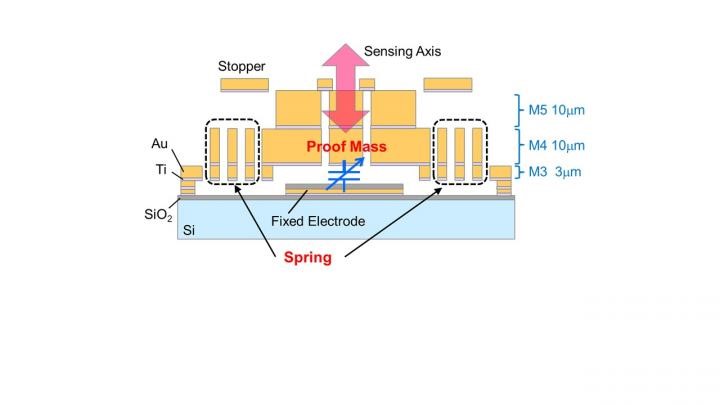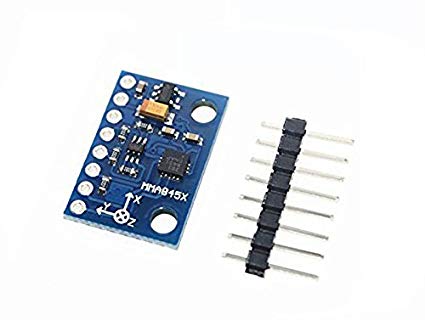Accelerometer design inevitably leads to trade-offs between the size reduction and the noise reduction. Mechanical noise is inversely proportional to the mass of the moving electrode. Additionally, sensitivity is generally proportional to the accelerometer size. That means there’s also a trade-off between size reduction and sensitivity increase. Since high-resolution accelerometers require low noise and high sensitivity performances, it has been difficult for conventional silicon-based MEMS accelerometers to detect 1 μG level input acceleration.
Until now.
A research group consisting of Tokyo Tech and NTT Advanced Technology Corporation engineers previously proposed a method to downscale the proof mass size of MEMS accelerometers to less than one-tenth by using gold material. As an extension of this achievement, they recently employed multi-layer metal structures to the proof mass and spring components and developed a low noise and high sensitivity MEMS accelerometer.
By using multiple layers of gold for the proof mass structure, increasing the mass per area, they reduced noise inversely proportional to the proof mass. They also utilized the whole area of the 4 mm square chip by reducing the warpage of the proof mass, which enabled them to increase the capacitance sensitivity of the accelerometer.

With these results, the developed accelerometer achieved the sensitivity to 100 times or more and the noise to be one-tenth or less as compared with conventional accelerometers of the same size. Accordingly, they confirmed that the accelerometer could detect input acceleration to be as low as 1 μG.
Because the fabrication process utilized semiconductor microfabrication process and electroplating, it could be possible to implement the developed MEMS structures on an integrated circuit chip. The proposed technology could help increase the resolution of miniaturized accelerometers for general purpose use.
It would be a breakthrough in a variety of motion sensing applications, from healthcare to robots, to use an ultra-compact and high-resolution accelerometer.
A significant increase in the demand for accelerometers is expected as the market for consumer electronics, such as smartphones, and social infrastructure monitoring applications are expanding. The researchers predict an era where it’s common for electronic devices and more to have a large number of motion sensors to complete both everyday and high-tech tasks.

